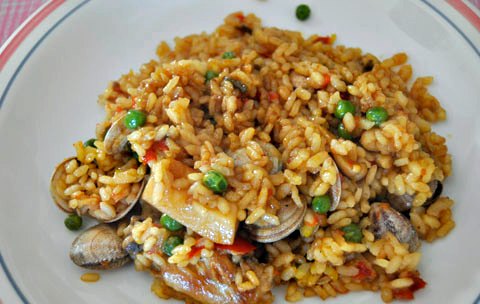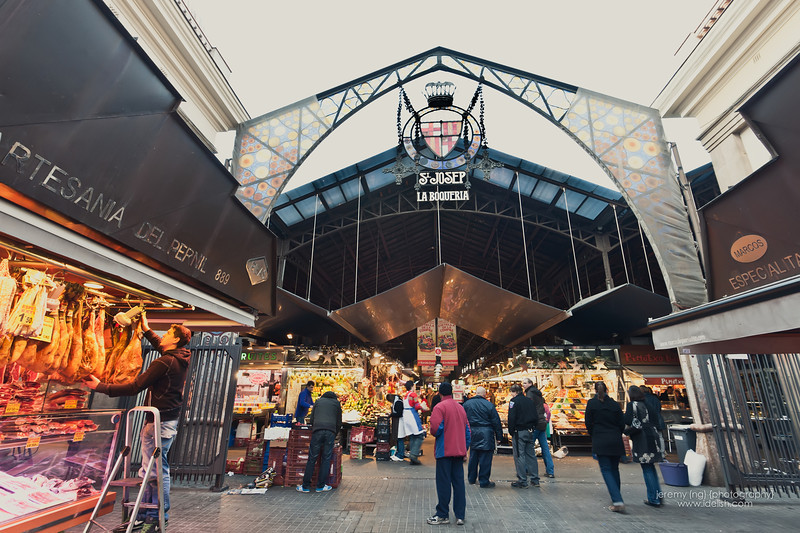Catalonia, maximum expression of culinary character
As with nearly all cultures, Catalonian cooking has great character. Its innovative cooking often looking back to history for inspiration. Although ultimately Mediterranean, Catalonia has been influenced by various cultures over the centuries: the Greeks, Romans, the Italians in the eighteenth century and the French have all left their mark on this complex cuisine. Catalonia has absorbed the best of each country and created a culinary package which forms part of the popular wisdom of the region.
The Catalonian cuisine uses the same ingredients as in other Mediterranean regions: tomatoes, garlic, fresh herbs, olive oil (particularly those of the Denomination of Origin Garrigues and Siurana, prepared using the variety of olive called the "arbequina"), onions, cod The traveller is sometimes reminded of dishes from Provence, Rosellon, Naples or Sicily: cities which invaded the Kingdom of Aragon of which modern Catalonia formed part.
Varied cuisine
In any case, to understand the gastronomy of this region the visitor must keep in mind that Catalonia has various cuisines: sea cuisine at the Costa Brava, sea and mountain cuisine at Ampurdán, mountain cuisine in the Pyrenees of Lerida, the remarkable cuisine of the valley of Arán and Cerdanya in the Pyrenees of Girona and yet another type of cuisine on the coast of Tarragona, etc.
Logically, each region has its own recipes and ingredients. If the sea urchins, rock fish and seafood casseroles called "suquets" tempt all visitors to the Costa Brava harbours, the wild variety of wild mushrooms are the passion of entire Catalonia during the autumn months, especially in the forests of Lleida.
Suquet: suquet is the diminutive form of suc, or 'juice', in Catalan, which means that this wonderfully flavored dish is more correctly called juicy fish stew. The fish and shellfish used vary from cook to cook, and so does the amount of liquid - in fact, some people call this a stew, while others call it a soup - but saffron and almonds are typically part of the mix.
The combinations of seafood with inland products (rabbit with lobster and snails, chicken with crayfish, etc.) surprise all visitors to Girona, the eating ritual of "calçots" (small flavoursome green onions grilled on a flaming barbecue) and the intensity of a good "allioli" (garlic sauce) will never disappoint the traveller passing through the villages in Tarragona.
Rice is also eaten throughout Catalonia and one seafood dish which is relatively recent despite its popularity is the "fideuá" (made with noodles). The various Catalonian sausages ("fuet", "llonganisa", "butifarra") or emblematic dishes such as the "esqueixada" or "escalivada" (mixed vegetable stews) are more examples of Catalonian cuisine.
Arroz con Cebolla Confitada: Catalans like to mix seafood and meats, which they call mar y montaña (sea and mountain), and this dish, a specialty of the Bajo Ampurdán area, in Girona Province north of Barcelona, is an excellent example of that tradition. I first tasted it at Can Pep, a restaurant in the beautiful beach town of Calella de Palafrugell, and was immediately smitten. Like many other rice dishes from around the Mediterranean, this one is prepared in a cazuela, rather than in a paella pan.
Escalivada: Catalonians eat this dish as a first course or as an accompaniment to meats. The special characteristic of these roasted vegetables is their smoky flavor, since orthodoxy demands roasting them over embers (the Catalan word escalivar means 'to roast over ashes or embers').
Esqueixada is a quintessential Catalan salad (esqueixar is Catalan for “to tear”). The main ingredient is always cod. Some versions also include green bell peppers; others eliminate the peppers altogether. I make mine with red only.
Influence from the capital
Within this delicious culinary offer, Barcelona has always acted as the capital, becoming the best place to taste recipes from all over Catalonia. It was in Barcelona where the bourgeois adopted and improved country fare and all popular cooking can now be found in the endless amount of restaurants which make Barcelona one of the best gastronomy centres in Spain.
One of the great attractions of the Catalonian capital is its unique market, "La Boquería", which dates back to medieval times and still preserves its original structure and is, without doubt, one of the most attractive markets in Europe. The "colmados", authentic specialist shops which were originally established to sell deep-sea products, demonstrate the sophisticated gastronomical taste of the locals. But Catalonian cooking is by no means the preserve of Barcelona.
A toast to its wines
Another activity which reflects the Catalonian dynamism is the wine industry. There are eleven different Denominations of Origin, due to the varied landscapes of the region. Catalonia has both large production regions such as Penedés and small and more specialized regions, such as Conca de Barberá, Alella and Pla de Bages.
With this wine heritage, Catalonia is capable of producing fresh, light white wines, powerful red wines and classical rosé wines; light internationally recognized red wines and sparkling wines which are exported world-wide and have the Denomination Cava, the best natural sparkling wine in the world, together with French champagne.
Historically speaking, the Catalonian vineyard basically produced red wines until the production of cava at the end of the nineteenth century was increased, thereby boosting the production of three other local varieties at the same time: Xarel·lo, Macabeo and Parellada.
The last great success of Catalonian viticulture has been the recognition of the D.O. Priorat, an area which produces powerful and complex reds from Garnacha and Cariñena grapes which are considered as among the best in the world. The example of Priorat has served to recognize other Catalonion D.O.s, such as Falset, Tarragona, Empordà-Costa Brava and Montsant (the last one). Recently, the D.O. Catalunya has been created for local products throughout Catalonia.
A selection of Catalan Wines
|
| ||||
|
|
You may be also interested in...
MOre Catalan Recipes
|
Escudella means "bowl," and in Catalonia it is the name of a big stew-soup, escudella i carn d'olla, usually made for Christmas. The rustic taste of this stew is evident in the bones and feet, whose gelatin give such an unctuousness to the dish, and in the rough vegetables such as cabbage and turnips that were so common in the mountains and hills. |
|
Roasted duck with pears: Cardona, a medieval town close to Barcelona, is home to an amazing ninth-century castle that sits on a hilltop, dominating the local landscape. Luckily, Spain's state-owned hotel chain, Paradores, has renovated and modified the large castle, transforming it into a comfortable hotel. A visit to this magnificent place, which with its mazelike corridors is more like a feudal home than a hotel, will take you back centuries. The hostelry's dining room serves this memorable duck with pears, a classic of Catalan cuisine. |














